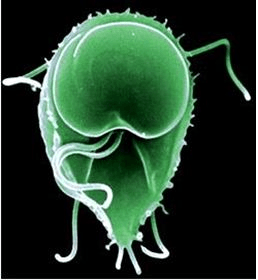DISTRIBUTION AND RISK FACTORS FOR GIARDIA LAMBLIA AMONG CHILDREN AT AMRAN GOVERNORATE, YEMEN
Keywords:
Amran Governorate, Giardiasis, Giardia lamblia, prevalence, YemenAbstract
Objective: The widespread prevalence of Giardiasis is a public health problem worldwide, and it is also common among Yemeni children. Hence, this work aims to identify the prevalent Giardia lamblia infection and risk factors among children admitted to health care centers in Amran governorate in Yemen.
Methods: Three hundred and thirty-four stool samples were collected from infected children between March and July 2019 and the parasite is identified by light-microscope according to standard parasitology methods. Also, relevant data was obtained using a designed questionnaire.
Results: The results showed that 181 cases (54.2%) were infected with G. lamblia infection. 57.5% of the infected children were from urban areas, while 42.5% of the cases were from rural areas. The highest incidence of G. lamblia was 60.3% among males compared to 47.5% among females. The results for age, residents and male children aged 8-14 years in both urban and rural areas recorded the highest prevalence of G. lamblia infection while the lowest was among females between 1 and 7 years and 8-14 years old, respectively, in the rural and urban area.
Conclusion: In conclusion, as described in this work, multisectoral efforts are needed that include hygiene practices, personal hygiene habits, the provision of safe drinking water and the provision of sanitation systems to efficiently reduce this infection from all governorates of Yemen.

Peer Review History:
Received 1 April 2020; Revised 7 May; Accepted 24 June; Available online 15 July 2020
Academic Editor: Dr. Nuray Arı , Ankara University, Turkiye, ari@ankara.edu.tr
, Ankara University, Turkiye, ari@ankara.edu.tr
Reviewer(s) detail:
Prof. Dr. Hassan A.H. Al-Shamahy , Sana'a University, Yemen, shmahe@yemen.net.ye
, Sana'a University, Yemen, shmahe@yemen.net.ye
Dr. Mahmoud S. Abdallah , University of Sadat city, Egypt, dr_samy777@yahoo.com
, University of Sadat city, Egypt, dr_samy777@yahoo.com
Downloads

Published
How to Cite
Issue
Section

This work is licensed under a Creative Commons Attribution-NonCommercial 4.0 International License.









 .
.